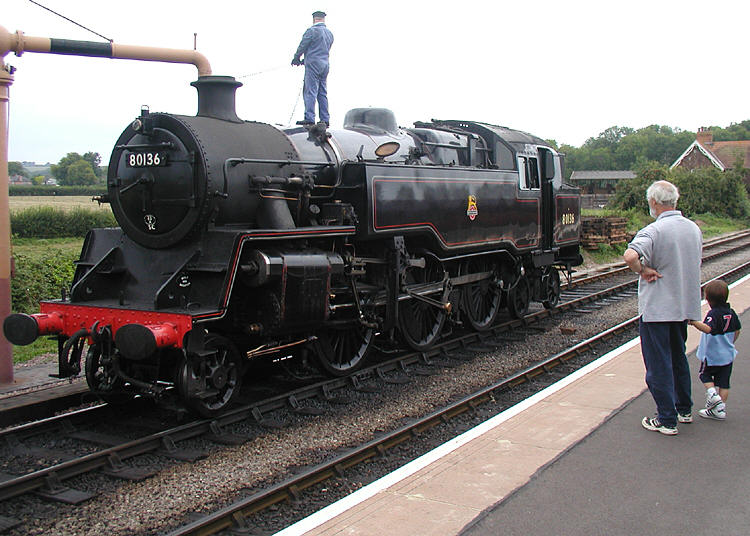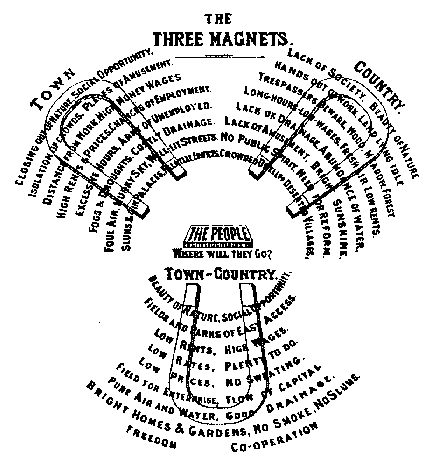|
Villenkolonie Pasing I
The Villenkolonie Pasing I is a single-family house colony in Munich-Pasing. History The Villenkolonie Pasing I was built on the initiative of the architect August Exter, starting in 1892, as "Villenkolonie Neu-Pasing I". Exter acquired a large piece of arable land and connected the area, at his own expense, with its own canal system and water through a water tower on Orthstraße. This settlement with numerous historically protected buildings followed the idea of the Garden city movement. The project was very successful, and nearly all of the 120 sites were sold in 1895. The building styles were based on historical models and, on the other hand, local building traditions. The Villenkolonie is bounded to the south by the railways, in the west and north by the Nymphenburger Kanal and in the east by the Offenbachstraße. In 1897, west of the Pippinger Straße, the Villenkolonie Pasing II The Villenkolonie Pasing II is a single-family home colony in Munich- Pasing. It was built acc ... [...More Info...] [...Related Items...] OR: [Wikipedia] [Google] [Baidu] |
Munich
Munich ( ; german: München ; bar, Minga ) is the capital and most populous city of the German state of Bavaria. With a population of 1,558,395 inhabitants as of 31 July 2020, it is the third-largest city in Germany, after Berlin and Hamburg, and thus the largest which does not constitute its own state, as well as the 11th-largest city in the European Union. The city's metropolitan region is home to 6 million people. Straddling the banks of the River Isar (a tributary of the Danube) north of the Bavarian Alps, Munich is the seat of the Bavarian administrative region of Upper Bavaria, while being the most densely populated municipality in Germany (4,500 people per km2). Munich is the second-largest city in the Bavarian dialect area, after the Austrian capital of Vienna. The city was first mentioned in 1158. Catholic Munich strongly resisted the Reformation and was a political point of divergence during the resulting Thirty Years' War, but remained physicall ... [...More Info...] [...Related Items...] OR: [Wikipedia] [Google] [Baidu] |
Pasing
Pasing is a district in the city of Munich, Germany, and part of the borough Pasing-Obermenzing. Overview Pasing is located west of the Munich city centre, at the north-western edge of the city's innermost traffic zone. The district is mainly residential; there is a large concentration of shops, hotels and restaurant at the Pasinger Marienplatz (''Pasing St. Mary Square''), the quarter's main square. The quarter's railway station, Pasing Station, is served by the S-Bahn suburban trains 3, 4, 6, 8 and 20 as well as national and international trains services. Tram line 19 and several local bus lines terminate at the station The Pasinger Stadtpark (''Pasing City Park'') is the quarter's main recreational park. It is located south of Pasing Marienplatz, straddling the river Würm. Nearby, a branch of the Munich University of Applied Sciences is located. Population On 31 December 1991, the population of Pasing was 39,723 residents over an area of 4.15 square miles (1,074 hectares) ... [...More Info...] [...Related Items...] OR: [Wikipedia] [Google] [Baidu] |
Cultural Heritage Management
Cultural heritage management (CHM) is the vocation and practice of managing cultural heritage. It is a branch of cultural resources management (CRM), although it also draws on the practices of cultural conservation, restoration, museology, archaeology, history and architecture. While the term cultural heritage is generally used in Europe, in the USA the term cultural resources is in more general use specifically referring to cultural ''heritage'' resources. CHM has traditionally been concerned with the identification, interpretation, maintenance, and preservation of significant cultural sites and physical heritage assets, although intangible aspects of heritage, such as traditional skills, cultures and languages are also considered. The subject typically receives most attention, and resources, in the face of threat, where the focus is often upon rescue or salvage archaeology. Possible threats include urban development, large-scale agriculture, mining activity, looting, eros ... [...More Info...] [...Related Items...] OR: [Wikipedia] [Google] [Baidu] |
Garden City Movement
The garden city movement was a 20th century urban planning movement promoting satellite communities surrounding the central city and separated with greenbelts. These Garden Cities would contain proportionate areas of residences, industry, and agriculture. Ebenezer Howard first posited the idea in 1898 as a way to capture the primary benefits of the countryside and the city while avoiding the disadvantages presented by both. In the early 20th century, Letchworth, Brentham Garden Suburb and Welwyn Garden City were built in or near London according to Howard's concept and many other garden cities inspired by his model have since been built all over the world. History Conception Inspired by the utopian novel '' Looking Backward'' and Henry George's work '' Progress and Poverty'', Howard published the book '': a Peaceful Path to Real Reform'' in 1898 (which was reissued in 1902 as '' Garden Cities of To-morrow''). His idealised garden city would house 32,000 people on a s ... [...More Info...] [...Related Items...] OR: [Wikipedia] [Google] [Baidu] |
Pippinger Straße
The Pippinger Straße is a street in the Munich districts of Pasing and Obermenzing, which for centuries runs as the Würmtalstraße on the left bank of the Würm river. The roads full-length runs through rural area, partially with fields on the western side, and undeveloped areas, although the road serves as a main connection to the Bundesautobahn 8. History The Pippinger Straße starts at the railway underpass west of the Munich Pasing station and touches the Villenkolonie Pasing II. It crosses the former hamlet of Pipping. At the height of the former farms of Pipping is also the village church of St. Wolfgang, which was built between 1478 and 1480. Then the Pippinger Straße passes the Blutenburg Castle Blutenburg Castle is an old ducal country seat in the west of Munich, Germany, on the banks of river Würm. History The castle was built between two arms of the River Würm for Duke Albert III, Duke of Bavaria in 1438–39 as a hunting-lodge, ... and, after crossing ... [...More Info...] [...Related Items...] OR: [Wikipedia] [Google] [Baidu] |
Villenkolonie Pasing II
The Villenkolonie Pasing II is a single-family home colony in Munich- Pasing. It was built according to the model of a garden town. History The idea of the Villenkolonie Pasing II, west of the Würm river, also came from August Exter, but he failed to execute the plan. In 1897, Exter gave up his construction business and gradually withdrew himself from architectural activity. Contrary to the widely assumed rumors that Exter also built the Villenkolonie Pasing II, the undeveloped property became the property of the ''Terraingesellschaft Neu-Westend AG'' in 1899. The highest bidder was Lazard Speyer-Ellissen, a Frankfurt-based bank led by Georg Speyer. The development of the site was carried out by the ''Neu-Westend AG''. Extern's debts to the city of Pasing were taken over by the royal bank branch. Until 1900, 90 houses were built, but then the construction progress stagnated. In 1929, there were 106 houses under construction for several hundreds of first inquiries. The settlem ... [...More Info...] [...Related Items...] OR: [Wikipedia] [Google] [Baidu] |
Buildings And Structures In Munich
A building, or edifice, is an enclosed structure with a roof and walls standing more or less permanently in one place, such as a house or factory (although there's also portable buildings). Buildings come in a variety of sizes, shapes, and functions, and have been adapted throughout history for a wide number of factors, from building materials available, to weather conditions, land prices, ground conditions, specific uses, prestige, and aesthetic reasons. To better understand the term ''building'' compare the list of nonbuilding structures. Buildings serve several societal needs – primarily as shelter from weather, security, living space, privacy, to store belongings, and to comfortably live and work. A building as a shelter represents a physical division of the human habitat (a place of comfort and safety) and the ''outside'' (a place that at times may be harsh and harmful). Ever since the first cave paintings, buildings have also become objects or canvasses of much art ... [...More Info...] [...Related Items...] OR: [Wikipedia] [Google] [Baidu] |
Historicist Architecture In Munich
Historicism is an approach to explaining the existence of phenomena, especially social and cultural practices (including ideas and beliefs), by studying their history, that is, by studying the process by which they came about. The term is widely used in philosophy, anthropology, and sociology. This historical approach to explanation differs from and complements the approach known as functionalism, which seeks to explain a phenomenon, such as for example a social form, by providing reasoned arguments about how that social form fulfills some function in the structure of a society. In contrast, rather than taking the phenomenon as a given and then seeking to provide a justification for it from reasoned principles, the historical approach asks "Where did this come from?" and "What factors led up to its creation?"; that is, historical explanations often place a greater emphasis on the role of process and contingency. Historicism is often used to help contextualize theories and narra ... [...More Info...] [...Related Items...] OR: [Wikipedia] [Google] [Baidu] |
_-_Pasing_-_Obermenzing.png)




.jpg)